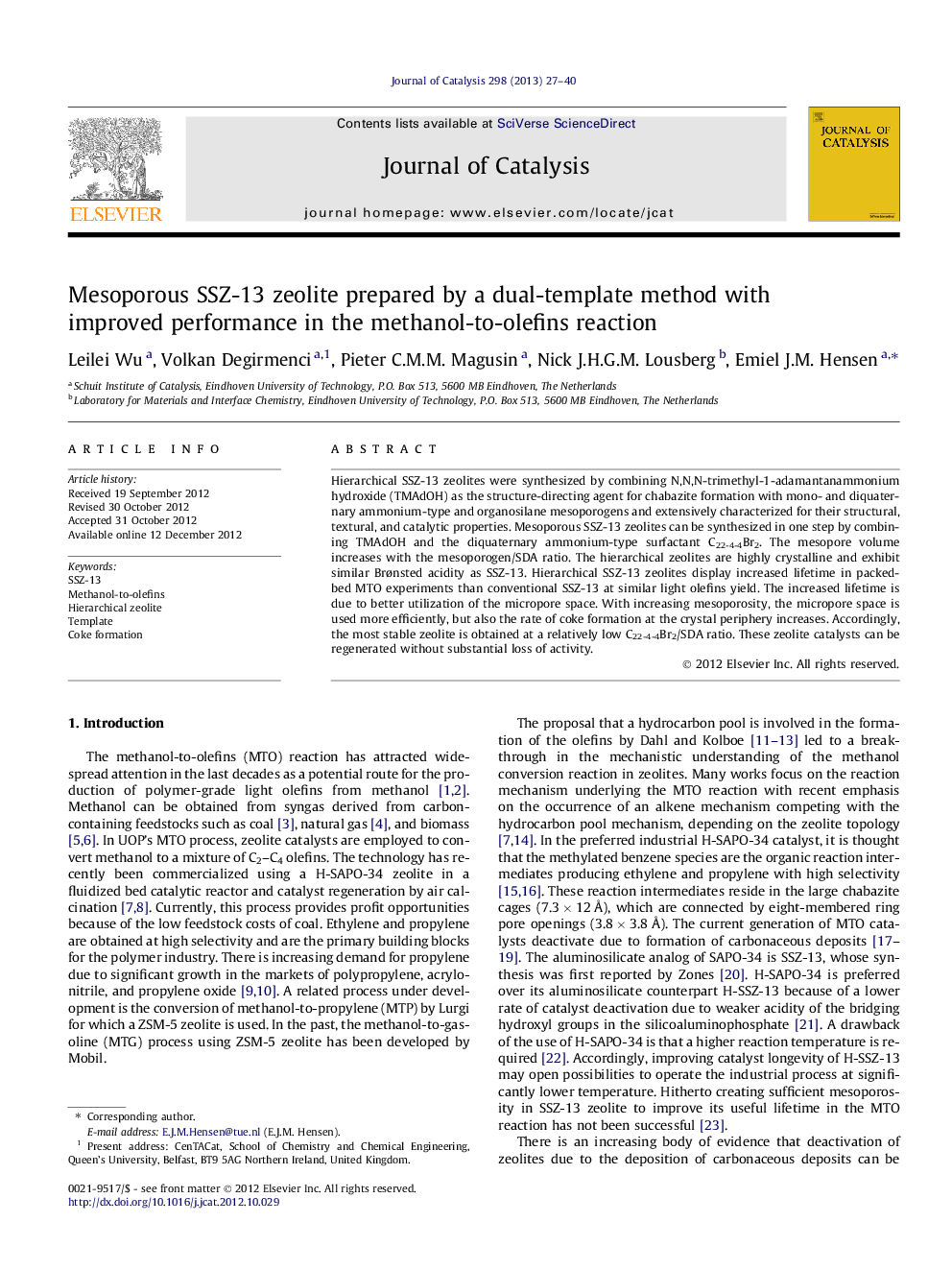| کد مقاله | کد نشریه | سال انتشار | مقاله انگلیسی | نسخه تمام متن |
|---|---|---|---|---|
| 61304 | 47575 | 2013 | 14 صفحه PDF | دانلود رایگان |

Hierarchical SSZ-13 zeolites were synthesized by combining N,N,N-trimethyl-1-adamantanammonium hydroxide (TMAdOH) as the structure-directing agent for chabazite formation with mono- and diquaternary ammonium-type and organosilane mesoporogens and extensively characterized for their structural, textural, and catalytic properties. Mesoporous SSZ-13 zeolites can be synthesized in one step by combining TMAdOH and the diquaternary ammonium-type surfactant C22-4-4Br2. The mesopore volume increases with the mesoporogen/SDA ratio. The hierarchical zeolites are highly crystalline and exhibit similar Brønsted acidity as SSZ-13. Hierarchical SSZ-13 zeolites display increased lifetime in packed-bed MTO experiments than conventional SSZ-13 at similar light olefins yield. The increased lifetime is due to better utilization of the micropore space. With increasing mesoporosity, the micropore space is used more efficiently, but also the rate of coke formation at the crystal periphery increases. Accordingly, the most stable zeolite is obtained at a relatively low C22-4-4Br2/SDA ratio. These zeolite catalysts can be regenerated without substantial loss of activity.
Hierarchical H-SSZ-13 zeolite catalysts with improved lifetime in the methanol-to-olefins reaction are synthesized by combining a zeolite structure directing agent with a “diquaternary-ammonium surfactant mesoporogen which limits crystal growth. Catalyst performance is correlated to texture as a function of the ratio of the two templates.Figure optionsDownload high-quality image (115 K)Download as PowerPoint slideHighlights
► Hierarchical SSZ-13 prepared by combining templates for micro- and mesopore formation.
► Structural, textural, and acidic properties characterized.
► Improved catalyst stability in the methanol-to-olefins reaction.
► More efficient utilization of the micropore space of SSZ-13.
► No substantial loss of activity after five cycles regeneration.
Journal: Journal of Catalysis - Volume 298, February 2013, Pages 27–40